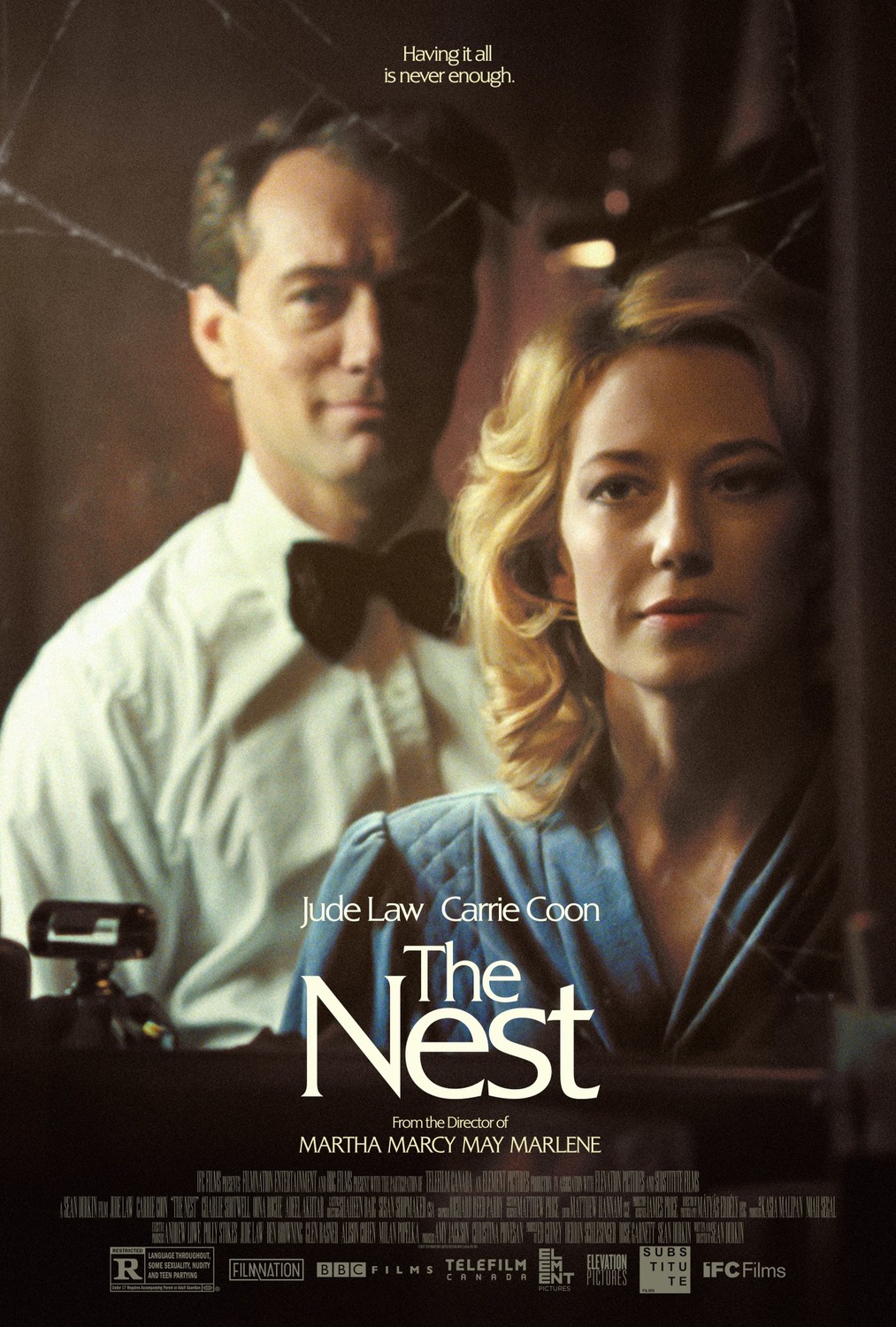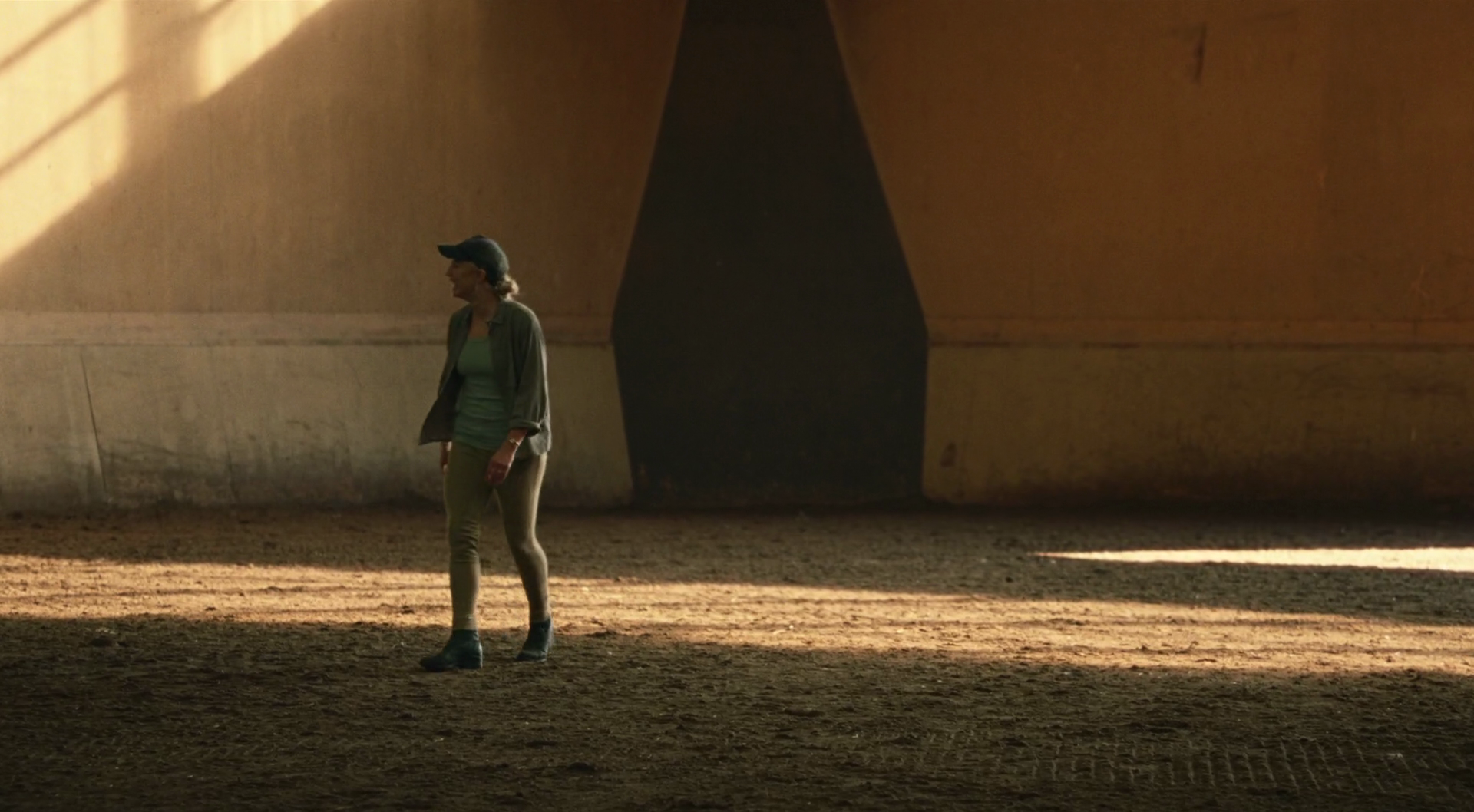The Furniture: The Nest and Its Not-Haunted House
 Wednesday, December 2, 2020 at 6:10PM
Wednesday, December 2, 2020 at 6:10PM
"The Furniture," by Daniel Walber. (Click on the images for magnified detail)
 Don’t marry an investment banker!
Don’t marry an investment banker!
This, as far as I can tell, is the central message of Sean Durkin’s The Nest. And it’s good advice! Rory O’Hara (Jude Law) is a Gordon Gekko without any of the charm, a stiff Englishman determined to perform his financial success in front of a vaguely imagined audience of the rich and powerful. His wife, Allison (Carrie Coon), is miserably along for the ride. It’s a period piece, but it’s laser focused on toxic aspects of our culture that certainly haven’t gone away. The ‘80s never ended, not really.
And so we watch as Allison and her two children are dragged from their house in the US, already their third home in 10 years, and across the pond to an enormous old mansion in Surrey. Rory’s determination to make it big back in the UK upends everything, from Allison’s equestrian interests to their daughter’s gymnastics. I bring this up because it’s one of our few glimpses at the life before, represented in wide spaces like the sun-dappled walls of the stable and the well-lit, colorful gym...
Their England looks nothing like this. They move into an ancient (“These floorboards were laid in the 1700s when the place was remodeled”) and unfriendly manse, not to mention quite dark. It’s old wood and Gothic windows, each shade of brown gloomier than the last. At first we barely even see it, peering out at the family from the taxi that dropped them off.
Durken unveils the house slowly over the course of the film, making sparing use of exterior shots. We mostly get partial glimpses, as if we were lurking outside and watching through the trees.
Instead, our attention is directed toward the alienating interiors. The work done by production designer James Price, art directors Tilly Scandrett and Ciara Vernon, and set decorator Joe Susin is intentionally incomplete, in part because Rory is too broke to furnish the house. We see a number of objects that must just be considered permanent fixtures, portraits of someone else’s rich ancestors and empty cabinets.
It’s all a bit spooky, a haunted house too boring to sport any actual ghosts.
That said, there is some beauty inside. Allison and Rory’s bedroom sports a gorgeous wallpaper that looks hand painted, a relic of a more decorative time. Tans and muted greens, down the bedsheets and onto the floor, give the space a warm but lethargic atmosphere. It’s very hard to imagine waking up on a cold winter day and actually getting out of this bed.
Intimidating on the outside but musty and cramp within, the setting builds up The Nest’s more subtle themes. Beyond the simplicity of Rory’s utter failure as a husband and father, his situation has pointed specificity. Britain’s craven Thatcherites were determined to keep their cold, dead hands on the last vestiges of empire, while simultaneously sprinting in hot pursuit of an Americanized, greed-based economy. Rory wants the enormous country house and the modernism of the oversized flat, the latter of which he attempts to purchase even after bouncing checks to the landscaper of the former.
This visit to an empty apartment is one of the final straws for Allison. The film very nearly heads into a horror direction a few scenes later, as she begins to feel that the house has warped her relationship with her family. She’s lost, fumbling to find meaning in cavernous drawing rooms where the electric light is nearly as dim as the fireplace.
The only remaining question, at the end, is whether Rory has also figured out that his priorities and goals are abysmal and destructive. Durkin, to his credit, leaves this somewhat vague. Provoked by Allison abandoning him at a fancy restaurant in London, Rory finally reaches crisis. Booted from a cab, he walks much of the way home, arriving at dawn. He (and we) finally get a really good look at the house, the locus of so much quiet anger and frustration.
But it remains unclear exactly what Rory has discovered. Which of his ambitions is the problem? Will he get a different job or will he simply buck up and become a rationally wealth-obsessed businessman? Will they move back to America, or just to a London flat? There’s no real resolution, perhaps because the impulses he represents haven’t resolved either. And so we are left with a temporary clarity, a bright spot of breakfast before another uncertain day.
The Nest is currently available to rent digitally. It is nominated for Actor and Actress at the Gotham Awards.













Reader Comments (5)
Thanks for this, Daniel. There are so many subtleties in THE NEST that it is impossible to pick the all up on the first viewing. Your descriptions of the production design opened up more complexities for me to appreciate (and also non-set aspects like the gymnastics scene, which I had forgotten as I watched the movie but which backgrounds the behaviour of the daughter perfectly).
PS I also disagree with other TFE writers about the pacing of this movie. I felt it worked its way through the story at an appropriate and engrossing rate in both the first and second half.
A great choice for this series. THE NEST has great performances and is dripping in atmosphere but didn't amount to very much for me. I was finally left wondering what the point of it all was.
I ultimately didn't love this film but the aesthetic was divine.
I am so glad you did this because the house is the best part of the movie for me, apart from Carrie Coon & Jude Law's performances.
A dead horse as a heavy handed metaphor.
I literally have no desire to watch a horse die and then get slowly thrown into a pit. Fuck this movie.